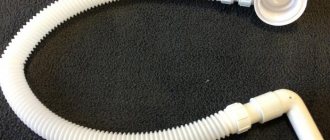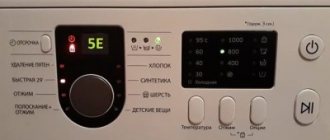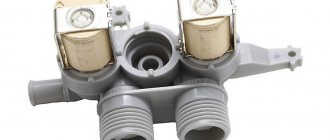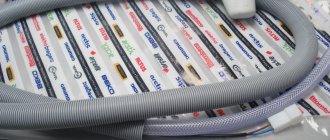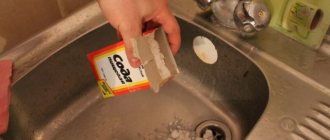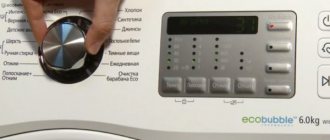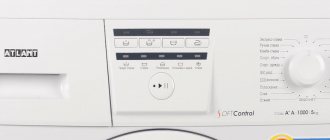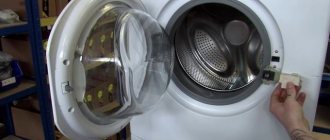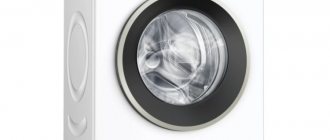Varieties
Before you begin lengthening, you need to familiarize yourself with the main types of hoses.
Jellied
The inlet hose is a device used to connect the washing machine to the water supply system. It is with its help that water is supplied to the internal elements of the system. Such products operate under high pressure conditions and therefore reinforcement technology is used in their manufacture.
The main material from which the filler tubes are made is polyvinyl chloride, the surface of which is covered with nylon.
The connecting components of the structure can be made of steel, aluminum or plastic. Budget models use plastic fittings that are unscrewed and screwed on manually, without the use of additional tools. When working with steel or aluminum products, you will have to use a special wrench.
Drain
A drain hose is used to drain liquid from washing equipment. The following types of drain tubes are distinguished:
- Standard. Such products are produced in a certain length, the length of which can reach five meters.
- Telescopic. These are corrugated products that can easily be stretched to the desired length. When connecting telescopic tubes, you must be very careful so that they do not bend. The kinks may burst under strong pressure.
- Polypropylene. They are made from durable polypropylene. At each end of the product there are special fittings with which a device for washing clothes is connected.
Purpose and features of the connection
Before you start extending the drain hose, you need to become familiar with its main purpose and the features of its connection. This design is used to drain water from washing equipment into the sewer system. The efficiency of draining liquid depends not only on the integrity of the structure, but also on the characteristics of its connection to the sewerage system and the washing machine. To connect the tubes, connecting elements - fittings - are used. They are installed on the hose and ensure its secure fastening.
For additional fixation, use a special rubberized or metal coupling. It is installed to the pipe responsible for removing liquid.
What types of drain hoses are there?
The drain hose is made of polypropylene with fittings (adapters) at the ends. In stores they sell:
Standard hose from 1 to 5 meters.- Telescopic (corrugated) hose. It is convenient because it eliminates kinks during operation, but there is a drawback - it is susceptible to blockages.
What to do?
There are two methods, differing in complexity:
- Replace the old drain hose with a new, longer one. This method has a small disadvantage. To remove the old hose, you need to disassemble some parts of the washing machine. In most models, the front wall is completely disassembled. Not a very convenient option for replacing the drain hose.
- Buy an additional hose from a specialized store and connect it to the existing one. The method does not require much effort, which makes extending the drain hose a simple task.
Methods for organizing drainage
Draining water can be done in several ways. The thoughtful design of the drainage system largely depends on this. Let's look at the most popular options:
Drain into a sink or bathtub
For this method, it is enough to insert the water drain hose into the holder and direct it to the bathroom or sink. This method is used if it is impossible to connect to a sewer or if the machine is temporarily used in this place.
Important! This option has its drawbacks: the inability to use the bathtub/sink when doing laundry, contamination due to waste water, and the unpleasant appearance of the device.
Connection to the sewerage system using a siphon. The best option for many cases. Ensures sufficient sealing and ease of use.
Important! The disadvantage of such a system is that it takes up a certain space.
Installation directly into the sewer through a cuff
In this method, it is necessary to ensure that there is a reserve length of the drain hose of the washing machine. Do not allow the hose to be tight, as vibrations can damage the connection, leading to leakage.
Siphon with check valve
This connection method is rarely used nowadays, since most apartments do not have a special place for devices such as a washing machine or dishwasher.
Important! A mechanism of this type is significantly superior to the previous ones, since it has a system of protection against unpleasant odors and the return of water into the equipment.
Important! Do not overload the washing machine to prevent expensive mechanisms from breaking down. Follow the link and learn how to calculate the weight of bedding for washing.
Through siphon
The siphon, or elbow, is endowed with an important function - by closing standing wastewater, it isolates the kitchen or bathroom from odors from the sewer. Modern siphons are already equipped with a side pipe to which the drains of washing machines and dishwashers are connected.
If you got an old or cheap siphon that does not have a side pipe, replace it with the one you need. A sink that has a small cabinet or a decorative ceramic support may not allow connecting the SMA through a siphon - it does not have free space for connecting the washing machine drain. A small washbasin will also not allow you to install additional pipes - there will not be enough free space under it. The disadvantage of the SMA siphon drain is the gurgling of waste water when the machine is operating.
To connect the drain through the siphon, the plug is removed from the latter. A layer of sealant or silicone glue is applied to the pipe at the connection point. The drain hose (or corrugation) is put on. A “worm” type clamp is placed and tightened at the connection point.
Connect directly
Direct connection is made using a tee or insert. One (straight) outlet of the tee is occupied by a sink, toilet, bathtub or shower, the second (corner) is occupied by the drain channel of the washing machine. The side outlet to which the MMA drain is connected is not located at a right angle, but is raised upward - in case the seal is not at hand.
The insertion is made directly into a pipe for which it is impossible to fit a tee (for example, it is asbestos or cast iron). If we are talking about an apartment building, and even on one of the lower floors of the building, it is recommended to shut off the water supply on this line in your entrance. Insertion, as well as removal from the riser, is carried out only during the overhaul of the apartment.
To connect the drain hose or pipe to the tee, use a rubber cuff or a homemade rubber gasket cut from old car inner tubes.
The fact is that drain hoses and tees at the point of their connection vary significantly in diameter. Without a gasket or cuff, wastewater will flow out - the SMA drain pump creates considerable pressure.
Through plumbing
Connecting the SMA drain through the plumbing means ensuring that laundry waste (wastewater) is discharged directly into the bathtub, sink or toilet, and not bypassing it, as with other methods. This requires frequent washing after a number of washes. Decaying waste that covers the surface of a bathtub or sink with a film emits an unpleasant odor and spoils the appearance of the plumbing fixtures.
To ensure that the drain hose is securely fixed to the bathtub or sink, use a hanger attached to the faucet or other butt joints on which it is hung. For example, on a sink, the hose is suspended from the base of the faucet.
A connection that is not completely strong can break off when the SMA removes the spent detergent solution before rinsing. The pump pumping out wastewater works unevenly, the hose will twitch and may come off. If this happened, and more than one bucket of water spilled out, then insufficient waterproofing of interfloor ceilings and not quite high-quality tiling (or tiles) will lead to leaks in the neighbors below, even in the bathroom, which is considered the safest room in terms of leaks.
A small sink may overflow with waste water. The fact is that washing technology is developing, operating time is decreasing. Water should be added - and pumped out after washing - as quickly as possible. Overflow is the fate of sinks and shower trays, in which the siphon is clogged with fatty deposits. Water does not flow into them - it seeps through.
When washing, you will not be able to fully wash yourself or go to the toilet. The water pumped out and flowing out of the tap (or tank) may ultimately exceed the capacity of the general drain.
Horizontal bend
This is a long section of drain hose located horizontally, often lying on the floor near the wall. This will ensure that there is an unpleasant smell from the sewer in the washing machine. To prevent this smell from spoiling the laundry that you did not remove in time after washing, the hose is raised and hung on the wall using any fastener (except through) at least 15-20 cm. You can place an elbow in any place - an S-shaped bend, in which standing water insulates the SMA from sewer odor.
It’s even better when a riser or “podium” is equipped for the SMA at the same height - the pump will work without extra effort, and the bend can be located next to the machine. The hose is positioned so that its space up to the bend is not filled with waste water. The length of the drain hose or pipe can be almost any.
In some cases, a separate water seal is installed near the main sewer pipe - instead of an S-shaped bend. The dimensions of the pipes at the joints are adjusted to each other using rubber, silicone or sealant for the purpose of sealing.
Hose extension methods
A washing machine drain hose extension can be created using the following two methods. Each method has its own distinctive features.
The first method involves purchasing a new hose of a suitable length for use. In this case, you just need to replace the old tube with a new one.
At first glance, there is nothing complicated in this method, but in practice everything is completely different. The fact is that on many models of washing machines the hose is attached from the inside.
To dismantle the element you will have to remove the front panel. Not everyone will take on such work. In addition, unscrewing the panel will void the warranty provided by the seller. For this reason, experts do not recommend replacing the hose on new washing machines.
A more rational solution would be to lengthen the tube. First you need to decide on the length to which this component will be extended. It should be taken into account that the hose should not have very tense places. Therefore, it is recommended to leave a small reserve.
Many people, in an effort to avoid tight spots, purchase hoses of increased length. So they get a new problem. Excessive length creates a greater load on the drain type pump. He has to expend more power to pump water through a long tube. As a result, the part fails earlier.
Experts recommend using drain hoses whose length does not exceed 3.5 meters. If you cannot meet this length, then it is better to install the washing machine as close as possible to the sewer pipe.
It is worth adding that the drain tube must be protected from external influences. This component must be positioned so that no one can step on or accidentally damage it.
Checking the washer for leaks
There are five things that must be checked after installing the washing machine:
- If the water drain pipe is connected under the sink in the kitchen, you should make sure that it is not connected to the washing machine in a straight line, without a bend. The hose, which is inserted into the U-shaped bend of the sink, must first rise to a height of 15 cm before lowering down to the machine. Otherwise, water will flow directly into the washer.
- You need to make sure that there is no leakage anywhere. If you need to specifically connect the inlet or drain hose, you need to carefully monitor the areas where they are connected to drainage and water supply.
- Fill and empty the washing machine several times to see how it works. Even if everything went without leaks, you need to check these areas again after a certain time. Perhaps a slow and almost imperceptible leak has formed here, which in the future can cause significant damage (when it is necessary to pay for the restoration of the premises in the apartment below, which was flooded).
You also need:
- Make sure the inlet hose is not too tight. Over-tightening causes the silicone seal between the faucet or water valve and the hose connection to become severely compressed and deformed. Tighten it by hand, and then just tighten it a little more. Don't overdo it.
- Make sure there are no kinks anywhere. If the equipment is already connected, you may not notice that the filling or draining tubes are bent. Inlet hoses are the most prone to fractures, especially when there is a connection with hot water supply.
The final check of the quality of the drain connection can be done without laundry.
Set some washing mode. Then, when the washing machine is filled with water and begins to wash things, you need to press the cancel key and carefully check whether the water is pouring out correctly.
So, following the tips and instructions that are described in the passport for the purchased washing machine, you can connect the equipment to the drain yourself. After the measures taken, you should definitely check how the washing machine functions in idle mode and ensure that all joints are tight.
Carrying out the procedure
First of all, you should make sure in advance that you have all the necessary parts in stock. This list includes:
- extension hose;
- special connector;
- clamps for fastening;
- screwdriver and other necessary tools.
First you need to put clamps on the ends of both hoses, then insert the end of the one that is connected to the washing machine into the connector on one side. The new hose is secured on the other side, now carefully tighten the clamp with a screwdriver. Fixing is not difficult, you just need to make sure that it does not slip off the connector.
After the process is completed, the machine can be connected to the sewer, and then the operation can be tested during washing. When the machine drains the water, see if the connection area leaks. This problem usually occurs if the ends are poorly secured and water seeps through the holes, but it is quite possible to prevent it at the work stage.
We suggest you familiarize yourself with: The washing machine does not fill the drum with water
If you don’t want to waste time and lengthen the drain hose by removing the old one, this method will be the most convenient option and is suitable even for those who have never performed such a procedure. Proper organization of water drainage is the key to your peace of mind. This will help avoid water leaks from under the machine and unpleasant odors caused by stagnation or drawing in liquid from the sewer system.
Troubleshooting drainage system problems
It is impossible to use the washing unit for its intended purpose when problems arise in the drainage system. You can handle some of them yourself.
Table. Malfunctions and ways to eliminate them.
- Symptoms of a problem
- Cause of failure
- How to fix the problem
| Failure in the program, a strong hum when the machine is operating, a decrease in the drain speed, the machine turns off when switching to draining water | Drain hose clogged | Cleaning the hose |
| Unpleasant smell from clothes, poor drainage, pump malfunctions | Filter dirty | Cleaning the filter |
| Water is pumped out, but flows out slowly, the pump motor hums, but the water does not drain, the pumping system does not function | Pump malfunction | Pump repair or replacement |
How to clean a drain hose
The drain tube may become clogged due to foreign objects getting into it. Most often, threads from clothes, fluff, lint and hair accumulate there, which form a blockage that prevents water from draining. There are two ways to clear a clog in the drain hose.
Using chemicals (in tablet, powder and liquid form), as well as baking soda or soda ash.
You can take a glass of soda and put the powder in the drum. After this, select the washing mode at a temperature of 90 degrees on the control panel. Water mixed with soda and heated to this temperature perfectly removes dirt adhering to the inner surface of the hose. This cleaning method is good because you don’t have to remove the hose.
Mechanical cleaning. In this case, the removed hose is cleaned with a narrow brush attached to a wire. Cleaning should be done from both ends of the drain tube. After such treatment, the remaining dirt is washed off with running water. To be more sure of the result, you can soak the hose for a couple of hours in citric acid diluted in warm water.
After installing the hose in place, it is recommended to carry out a test wash without clothes at maximum temperature. In this case, you should add citric acid to the detergent reservoir, which will perfectly remove scale from the parts of the washing machine.
Cleaning the filter
Removing contamination from the drain filter is not that difficult. It's easy to find. In all models it is located at the bottom of the washing machine body, on the right or left. Usually the compartment where the filter is located is closed with a decorative cover that has the same color as the unit itself.
How can I clean the filter?
- You need to open the plastic cover.
- It is better to place a cloth that absorbs water well on the floor where the filter is located. This is due to the fact that some water (dirty) will flow out of the hole.
- For the same purpose, you need to place a water container under the compartment.
- The lid is unscrewed.
- The filter is removed.
- It is necessary to manually remove large contaminants and then rinse the filter under running water.
- By sticking your hand into the hole, you can check for foreign objects on the impeller. They can be removed with your fingers.
- The filter returns to its place. It is important to ensure that it is installed straight along the thread. The part is screwed tightly to prevent water leakage. But over-tightening can strip the threads.
In addition to the listed types of blockages, malfunctions in the washing machine can occur due to a plug of dirt formed in the sewer. To fix the problem, you will have to clean the pipe or (more often) the connection point of the drain hose.
We connect the washing machine and dishwasher to the water supply system
Connecting a washing machine and dishwasher. November 23, 2006 Nowadays, a dishwasher and washing machine can be seen in almost any kitchen or utility room. They are made in standard sizes to suit the decor of the room and fit neatly under tables, in cabinets, etc. They are connected using flexible pipes - hoses - to a special or general kitchen sewer pipe or sink drain in the room where they are installed.
Automatic machines must be provided with a constant supply and drainage of water. Dishwashers require only cold water, but washing machines can have both cold and hot water. Hot water washing machines are faster and may also be more economical depending on how you heat the water.
Water pressure The instructions for the machine must indicate the operating water pressure. Hinge without mortise. If the machine is installed on an upper floor, it is necessary to check whether the height difference with the storage tank will provide the required pressure. On the lower level, pressure problems are rare, especially if cold water is supplied from the sink supply pipe.
However, consult a specialist when installing two or more machines. Rice. 1 Washing machine connection: Inlet pipe 15 mm (half inch) Machine valve PVC inlet hoses Water inlet Drain hose Water intake pipe Siphon Drain pipe 40 mm (one and a half inch) to the sewer Water inlet Washing machines and dishwashers are supplied with PVC hoses that connect the inlet water at the back of the car with special small-sized valves (valves) connected to the water supply system of the house.
Draining water from the washing machine. After connecting the washing machine to the water supply, we proceed to connecting the drain hose to the sewer. The washing machine is equipped with a drain hose, which, as the name suggests, drains the used water from the machine into the sewer. The drain hose at the end has a plastic tube onto which you need to put a reduction, the outer diameter of which corresponds to the diameter of the sewer socket.
A reduction can be said to be a rubber coupling with which you can connect pipes of different diameters, and in our case it is a thin tube at the end of the drain hose and a thick socket of the sewer pipe. The reduction will protect you from the leakage of used water from an overflowing sewer pipe, and of course from the odors emanating from the same pipes.
When connecting the drain hose, you can also use the pipe socket used. As in the case of the intake hose, you can put a tee on the socket used, which will allow you to connect the drain hose to the sewer. The drain hose can also be extended using a coupling and an additional hose.
The final touch in connecting an automatic washing machine will be connecting it to the power supply. There is nothing complicated here since the machine is equipped with a wire and a plug that just needs to be plugged into a socket. But the main requirement for the outlet will be the presence of a grounding contact, that is, the washing machine must be grounded.
Well, that’s all, after all the above, we can say your washing machine is ready for use, but you really still need to level it. The level of noise emitted by this miracle piece of equipment and its level of vibration will depend on how level your washing machine is installed. You can level the machine using its four legs, which are made in the form of bolts, with a plastic sole at the junction with the floor.
Well, that’s all, you’ve done it and now you can calmly wish you a pleasant wash.
We connect the washing machine and dishwasher to the water supply system. Well-made water supply and drainage are not only important elements necessary for the proper operation of the washing machine or dishwasher, but also a guarantee of their safe operation. Water and sewer connections can be made behind the washing (dishwasher) machine or next to it.
We suggest you read: How to remove the smell of spoiled meat
This should be done in such a way that they are easily accessible, allowing all necessary operations to be carried out during operation and maintenance of the equipment. The aesthetic appearance of the connections also plays an important role. What kind of water? Washing machines and dishwashers usually only supply cold water, although some models can also supply warm water (the temperature of which does not exceed 60°C).
Equipment supplied with warm water will use less electricity during the cycle (it will heat the water faster), but be aware that you will have to pay more for the warm water used (customers who pay for warm water off the meter , it may be cheaper). Attention!
Some experts do not recommend using warm water. They claim that washing and washing dishes in equipment supplied with warm water is less effective (proteins coagulate quickly in warm water). The supplied water must meet the requirements for drinking water (especially the content of iron and manganese salts, as well as hardness salts).
Therefore, the water must be prepared and, if necessary, filters must be installed that match the type of contamination in the loop without insertion. Filters that soften water are also available for sale. Their installation in front of the washing machine increases washing efficiency, reduces detergent consumption and protects equipment from scale.
But before installing such a filter, you must consult with the equipment manufacturer or employees of an authorized service point. The water flow in the system should be approximately 10-15 liters per minute. Before connecting the equipment, you need to check whether the pressure in the home system is compatible with the required pressure indicated in the documentation for the equipment.
It can range from 1 to 10 bar (0.1-1.0 MPa). 1 The free end of the hose, through which water is supplied to the washing machine, is put on the fitting and crimped with a clamp. 2. or using a union nut, it is connected to the thread of a special tap for connecting washing (dishwashers) machines. 3 The external siphon for washing machines is mounted on the wall and connected to the sewer system.
4 Hidden siphons can be combined into one with a water connection unit. 5. and even with a splash-proof electrical outlet Water supply To the place where the washing machine should be located, it is necessary to lay a water supply pipe, and at its end install a shut-off valve with a hose fitting or a special tap for connecting washing machines and dishwashers.
Ball valves or valves with ceramic heads are convenient and reliable to use. A hose (included with the washing machine or dishwasher) is connected to the tap, through which water is supplied to it. To protect equipment from mechanical impurities in the water supply, you need to install a filter - a plastic gasket with a metal or plastic mesh, which is inserted into the union nut of the hose.
In some washing machine models, the filter is installed by the manufacturer, while in others it is included as equipment. The water supply hose must be laid without kinks or kinks, away from sharp edges and high-temperature elements, so that it cannot be damaged during operation of the washing machine (dishwasher).
You should not shorten it yourself, much less lengthen it. If it is the wrong length, it is better to replace it with door hinges without mortise installation. Modern washing (dishwashers) machines are usually equipped with a check valve or a special system - Waterstop, which prevents water from returning to the water supply system through the intake hose. Attention!
If the device manufacturer recommends installing a check valve on the water supply system, you should listen to the recommendations. Draining used water The drain hose of a washing machine or dishwasher is connected to sewer lines located next to sanitary fixtures or directly connected to the sewer system.
The diameter of the sewer pipe to which the water drain is connected should not be less than 40 mm. If a connection of this diameter is longer than 3 m, it must be provided with additional ventilation, for example by installing an aeration valve. The water drain from the washing machine should be high enough from the floor.
In the operating instructions for each equipment model, this height is determined individually. Most often it is in the range of 55-90 cm. Attention! The end of the drain hose should always be above the maximum water level in the washing machine. Otherwise, water will always flow into the sewer through the switched off pump and drain hose, and the washing machine will continue to collect and heat it up.
In such a situation, the water may not even reach the set temperature, and electricity is wasted. Water can be drained by inserting the end of the drain hose directly into the sewer pipe with a rubber collar that is smaller than the outer diameter of the hose. The limit switch should not reach the level of the drains in the sewer.
To connect a washing machine or dishwasher, the most suitable solution would be to install a special siphon on the sewer system: • external; • hidden, integrated with a water connection fitting and a separate tap; • hidden, integrated with the water connection fitting, having a built-in tap;
• hidden, integrated with a splash-proof electrical outlet and water connection fitting, with a built-in tap. Connection to the water supply and sewer system and operation of devices must always comply with the manufacturer’s recommendations, which are contained in the instructions attached to them.
CAUTION WITH ELECTRICITY! Electrical sockets for connecting a washing machine or dishwasher can be installed: • in the kitchen - at a distance of at least 60 cm from the water point; for aesthetic reasons, you can place them under the kitchen countertop; • in the bathroom: at a distance of at least 60 cm from the water point.
Sockets must be splash-proof (protected from water splashes by a lift-up cover). In addition, they must have a protective earth contact and be connected via a residual current switch. The distance from electrical cables to sewer or water pipes must be at least 50 mm.
We invite you to familiarize yourself with proven methods to remove the smell of dampness in the house
Without scratching the walls and redoing the system Water supply If you need to connect water to the washing machine in the bathroom or kitchen and at the same time avoid the need to break the tiles and redo the system, you can connect the faucet via extension cords: one with a tap and a tap to which the hose is connected, supplying water to the equipment, the second is a simple pipe.
To do this, you need to dismantle the mixer, install extension cords, and then install the mixer again. Unfortunately, the water supply made in this way will be noticeable. 1 An extension cord with a branch and a tap for connecting a washing machine (dishwasher) must be installed on the cold water supply pipe. 2.
extension pipe (without tap) - to the hot water pipe. 3 The location of the drain hose on the edge of the toilet is dangerous. Hot water, with a temperature of up to 95°C, pouring into the toilet during washing can lead to serious burns to the person using the toilet, as well as cracking of the toilet itself.
4 Siphons of a sink, washbasin or bathtub can be equipped with a fitting for connecting the drain hose of a washing machine. Draining the water The simplest, but most dangerous, is a refrigerator with a glass door. The easiest way to remove dirty water from your washing machine or dishwasher is to place the drain hose directly into the sink, bathtub, sink, or under a closed toilet lid.
The end of the hose is hung on the edge of the sanitary fixture using a profiled elbow. This edge must be higher than the water level in the equipment. A bent drain hose falling off the edge of a sanitary appliance during the washing process is the most common cause of flooding in a room.
Through a siphon - for example, a washbasin or sink. Draining the water is possible after installing a special siphon with a fitting for connecting a hose from a washing machine or dishwasher. The disadvantage of this solution is the possibility of foam penetrating through the drain grate into the washbasin or sink bowl, as well as the occurrence of unpleasant squelching sounds in the siphon.
The advantage is the systematic cleaning of the siphon with a stream of hot water flowing under pressure from a washing machine or dishwasher. If the diameter of the drain channel is small (for example, 32 instead of 50 mm) and the length is large, difficulties may arise with the correct drainage of water from the equipment, and noisy suction of water may occur from the siphons of individual sanitary appliances that have a common sewer connection to the riser.
When to extend the hose
In older houses, the size of bathrooms and kitchens is modest and does not always allow convenient placement of a large washing machine next to communications. In addition, the devices are usually equipped with drain systems of a standard size and their length does not exceed 1.5 m. Therefore, there is often a need to lengthen them.
Before starting this operation, it is important to take into account some technical features of the device. For high-quality pumping of waste water, the drain hose should be located at a height of up to 1 m above the floor level. Otherwise, the power of the drain pump will not be enough to completely remove the soap solution from the tank, and the liquid will stagnate inside.
When connecting the device, the drains are positioned so that they are not in a tense state. In this case, the top point of the hose should be located 60 cm above the bottom. This value may differ for different models and manufacturers. All these features are described in detail in the manual for the device.
How to extend the drain hose
If, after purchasing a washing machine or moving it to a new location, it turns out that the length of the drain hose to connect the drain to the sewer is not enough, you can solve the problem by extending the hose to the required size. This is exactly the method that car owners most often resort to without the help of specialists.
Having determined the distance to the connection point with the sewerage system by which it is necessary to increase the hose, you need to purchase a segment of the required length and diameter.
The next stage is connecting the two parts together using an extension cord. Reliable connection is ensured by adapter couplings. The ideal option would be if the diameters of the connecting parts of the hose match. In this case, a coupling is used, both ends of which have a diameter of ½ or ¾ inches (19 or 22 mm, respectively). If tubes of different sections need to buy a ½ by ¾ reducing coupling (or 19 by 22 mm, respectively). When installing a connection, you need to take care of its reliability. For this purpose, both ends of the drainage tube are crimped using metal clamps, which must be placed on it in advance, on both sides of the adapter. Having securely fixed the clamps and installed the drain pipe to the required height, you should check the connections for leaks while the unit is operating.
How to increase the length of the drain hose
This problem can be solved in at least two ways - buy a new hose of a suitable size instead of a standard drain hose or purchase a modular pipe of the required length.
The choice of one option or another largely depends on the cost of purchased materials and the complexity of further installation. In the first case, it is necessary to take into account the individual design features of the automatic machine itself, since there are models in which, in order to connect the drain hose, you will need to remove the back panel of the washing machine. But you must remember that when disassembling equipment that has a service warranty period, the protective seals can be damaged, which is why you will not be able to repair the household appliance under the warranty provided by the manufacturer or seller.
It is advisable to place the connected drain hose in a place where it will not be subject to deformation. You also need to make sure that it is not stretched, bent, or has many different undulations.
The height of the drain hose, calculated from the point where it is attached to the washing machine to the outlet into the sewer hole, should be no more than one meter. Otherwise, the drainage of dirty waste water becomes difficult, and the pump may even break down.
To connect the drain modular corrugation, you will need a plastic coupling and clamps of a suitable size. These materials can be purchased at any hardware store. To perform the installation yourself, you will need a minimum of tools - a screwdriver or a screwdriver with a set of attachments.
Finally decide on the dimensions of the modular corrugation, if necessary, cut off the excess. Then insert a plastic connector into both hoses and crimp them with clamps on both sides.
If you want to completely replace the drain hose, carefully study the operating instructions for this washing machine, if you cannot do without removing the back panel. Inspect the factory seals and see if you can remove the back cover without breaking them. You can do all this on your own for free, or contact specialists working in this area of services on a paid basis.
Important point! Before you start, be sure to turn off the power to the washing machine and turn off the water supply. By following these simple safety rules, you will protect yourself from potential injuries and increase the life of quite expensive household appliances.
While performing these steps, you may encounter a problem such as the short length of the water supply hose to the automatic washing machine. You can solve it in the already known way described above. Only in this situation it is better to buy a nipple made not of plastic, but of brass. Its diameter should be 20 mm, and the thread should be external, adapted for connecting nuts for two hoses.
Apart from your hands, you will not need any additional tools, since you need to work here carefully and carefully regulate the applied forces, otherwise excessive pressure on the union nuts during the process of tightening them can lead to damage to the threads of the product. If the nuts cannot be tightened tightly or are placed in a hard-to-reach location, you can use an appropriately sized open-end wrench, using extreme caution.
Replacing the drain hose in a washing machine with your own hands
Replacing the washing machine drain hose may be necessary in several cases. Let's say you bought a washing machine and the drain hose turned out to be short, you can lengthen the drain hose, or you can buy a longer drain hose and replace it. Another reason for replacing the drain hose may be that it is worn out or broken. Perhaps you accidentally placed something heavy on it and a hole appeared in the hose. Also, over time, the drain hose itself becomes overgrown with dirt and scale inside, and an unpleasant odor may come from it. In this case, it is also better to replace it. If it is not possible to install the drain hose at the required height or the height is too low for the “siphon effect” to disappear, it is necessary to install an anti-siphon - a check valve for the washing machine.
Changing the drain hose in a washing machine with your own hands is not very easy. If the inlet hose is enough, just unscrew it and put a new one in its place. Then the drain hose is attached to the pump and passes through the body of the washing machine, which entails a small disassembly of the washing machine itself. But don’t worry, everything is not that scary, we will describe step by step the entire sequence of changing the drain hose with accompanying photographs and videos.
Before you begin replacing the drain hose, you must first drain the remaining water from the washing machine. To do this, remove the small cover located at the bottom of the washing machine and unscrew the drain filter. This operation must be done for all models of washing machines.
LG, Samsung, Beko, Indesit, Ariston, Ardo, Whirpool, Candy
The drain hose of these washing machine models is much easier to change than other brands. With machines of these brands, access to the drain hose is very easy; you do not need to remove covers or walls, because the drain can be accessed through the bottom of the machine.
Tilt the washing machine on its side for easy access to the drain pump. It is most convenient to place the washing machine on its side. Next you need to disconnect the end of the hose from the pump; to do this, take pliers and use them to loosen the clamp.
Then pull out the hose. Now the hose remains attached only to the body.
Remember how the hose is attached to the body and only then completely disconnect it.
Now that the old hose is disconnected, you need to install the new one. To do this, first insert the hose in the same way as the old one into the washing machine (But do not attach it to the body). Then connect one end of it to the pump using a clamp. If the pump has been removed, it must be reinstalled. And only after the hose is attached to the pump and it is in place, attach the hose to the body.
Electrolux and Zanussi
To change the drain of these washing machines, we will need a little more effort, because we will no longer have access to the hose through the bottom, and therefore we will have to remove the back wall.
First, let's remove the top cover, to do this, unscrew the two screws that are located on the back and push the cover back, after which it can be easily removed. Now unscrew the bolts holding the back cover. But we won’t be able to remove it right away, because it’s held in place by the filler valve. In order for us to remove the cover to the side, we need to unscrew the bolts securing this valve. For convenience, it is best to remove the inlet hose.
After this, the back wall of the machine can be safely removed. Now disconnect the drain hose from the pump by loosening the clamp (similar to the above washing machine models). Next, we remember how the drain is attached to the walls of the washing machine, or better yet, take photographs. Now we detach it from the walls and put it aside.
Now is the time to get a new drain hose. First of all, we throw it through, as we did earlier, lay the old hose (we do not fasten it) and attach its end to the pump and fix it with a clamp. Next, attach the hose to the body of the washing machine. We install the back cover, the fill valve on it and the top cover in place. We connect the machine to the water supply and sewerage and carry out a test wash. There should be no leaks at the connection points.
Bosch, Siemens, AEG
In these washing machines, replacing the drain hose requires even more effort than in all of the above models. In order to do this, we will need to remove the front wall of the machine, which entails the removal of some elements.
The first step is to remove the powder dispenser. Next, remove the bottom panel and drain the remaining water if you have not already done so. Now we need to disconnect the cuff from the front wall; to do this, remove the clamp that holds it on the cuff using a slotted screwdriver. Remove the cuff from the front wall so that it is not in the way of removing it.
Next, unscrew the bolts that secure the front wall to the body of the washing machine; they are located from top to bottom. After this, the front wall hangs on special hooks, but it cannot be removed because it is connected by wires leading to the loading hatch lock. There are two options: first, simply unscrew the bolts securing the door lock; and second, carefully move the front wall to a distance so that your hand can fit between it and the washing machine body and pull out the wire that fits this lock.
To remove the front wall, you need to lift it up a little and pull it towards you. It will be removed from the place with the hatch. Once you have removed it, set it aside and let's start changing the drain hose.
Here we do everything by analogy with other washing machines. Disconnect the drain from the pump by loosening the clamp. Next, we remember how the hose is routed along the body of the washing machine and disconnect it. We throw a new one on the same principle, but do not fasten it. Now we put the end of the drain hose on the pump and tighten it with a clamp. Next, the hose needs to be secured to the body of the washing machine, similar to the old one.
Before putting the washing machine back together, check the tightness and correct connections. Now we put on the front wall, insert the lock, put on the cuff and screw it into place. In a word, we put the machine back to its original state in reverse order.
Replacing the drain hose on a top-loading machine
In vertical washing machines, changing the drain hose is no more difficult than in horizontal-loading machines. The only difference is that the side wall of such a machine needs to be removed. To do this, unscrew the bolts that hold it, you can find them on the adjacent sides of the washing machine (back and front). After you unscrew the wall, remove it and put it aside. Inside the washing machine you will see a drain pump with a hose connected to it.
Next, before removing the drain hose from the washing machine, remember its location and attachment to the walls of the washing machine. After this, loosen the clamp and disconnect the hose from the drain pump. After this, unfasten the hose from the body and move it to the side. Then, by analogy, lay a new drain hose and connect it to the pump, securing it with a clamp. After this, attach the drain hose to the body of the washing machine.
Next, you need to put the side wall of the machine back on and do a test wash. If you notice a leak from the bottom of the washing machine, then most likely you have not secured the hose properly.
In the video below you can see replacing the drain pump in a washing machine. In our case, you can see how the drain hose is removed.
Washing machine drain hose extension
There is an idea to place the SM in the corridor of the apartment, thereby moving it away from the nearest siphon
4m. I want to supply cold water under the floor with an MP16 metal-plastic pipe; I also want to make the section of the drain pipe under the floor to the siphon from metal-plastic. Please tell me whether the capacity of the MP16 will be sufficient to ensure normal drainage from the washing machine.
and you definitely need to lift it to break the stream, and then drive it as you want, you can use a 30mm sewer pipe, but not less than the diameter of the outlet hose.
AlexPN a similar question has already been discussed in the section, use the search and you will find a lot of answers good luck
Thank you. Have already found
I did a similar thing - in a Khrushchev house I placed Zanusya in the hallway, and under the floor (I was fooling around with pulling for a long time) I put two pipes - MP16 under the HV, and MP20 (about three meters long) - under the drain, cat. According to the instructions, I brought it to the op. height and into the open pipe of the siphon, corrugated. For a year and a half everything is fine.
I did a similar thing - in a Khrushchev house I placed Zanusya in the hallway, and under the floor (I was fooling around with pulling for a long time) I put two pipes - MP16 under the HV, and MP20 (about three meters long) - under the drain, cat. According to the instructions, I brought it to the op. height and into the open pipe of the siphon, corrugated. For a year and a half everything is fine.
Jaralec, thanks for the advice. How did you connect the MP20 to the drain hose?
At the end of the drain hose, the rubber cuff is slightly larger in diameter - I just crimped it with a standard clamp. I started doing MP because I had to pull it under the floor (there is enough rubbish there to pierce the usual long drain hose that is sold, although I saw the long one only later), and it took me a long time - first I pulled the wire, then the pipes. and I also tried not to crush the pipes (the logs interfered with simple penetration).
Maks2002 wrote: and you definitely need to lift it to break the jet
Sorry, I don’t understand: what should I raise? Why break the stream?
2 old master The point is to avoid the “siphon effect” - the water draining into the sewer sucks out the water seal, resulting in an air connection between the washing machine tank and the sewer.
2Jaralec I just bought a long drain hose, one of these days I will try to lay it under the floor. Length turns out
2AlexPN I’ve been coping with 6 meters of drain hose for four years now, but I’m seriously worried about the pump. A corrugated hose of such length is a serious resistance to water flow. Probably metal plastic like Jaralec is still preferable.
RE:MONTER The pump may not push the pole to the critical height (determined by the characteristics of the pump), but the length does not matter - extend it by at least 100m.
2Zotos Are you a science fiction writer? That science has already refuted the fact of the existence of hydrodynamic resistance.
2RE:MONTER I agree, MP has much less resistance. I will opt for this solution.
Tell me, please, how can I lengthen the drain hose of the washing machine? I need to add about 50 cm. The drain hose of the washing machine (Bosch WLX 24462) ends with a rubber piece that fits perfectly onto a special siphon outlet. That is, you need something that has a similar rubber thing on one end, like on a typewriter, and on the other, similar to a siphon outlet.
And another question) What kind of filter should be installed on the inlet hose of the washing machine?
pushkin wrote: Please tell me how I can lengthen the drain hose of the washing machine? I need to add about 50 cm. The drain hose of the washing machine (Bosch WLX 24462) ends with a rubber piece that fits perfectly onto a special siphon outlet. That is, you need something that has a similar rubber thing on one end, like on a typewriter, and on the other, similar to a siphon outlet.
And another question) What kind of filter should be installed on the inlet hose of the washing machine?
Typically, extension hoses are sold on both sides with this same rubber thing, one end is connected to a special siphon outlet, and the other is fused to the original hose using a fitting. Don't forget to put on the clamps 20-30. Any filter, usually mud filters are installed. If there is a normal cleaning system at the entrance to the house, you can do without it. The wash has a small mesh on the nut, like the one in the mud bags. I personally didn’t install any. But, in general, the cleaner the water supplied to the washer, the better.
Additional Tips
If you had to expand or change parts, do not forget to check whether your machine has enough cord to connect to the mains. If the cord is too short, or, on the contrary, the outlet is far away, then you need to pay attention to this point. It is better not to use extension cords to connect the washing machine to the network. This is fraught with serious damage: such extension filters often cause a fire.
Now you know how to extend the drain and intake hose of a washing machine. And no matter where your washing machine is, you will always find a way to successfully connect it to all communications.
How to replace the water supply hose
Also, if necessary, you can completely replace the water supply hose attached to the washing machine. To do this, you need to purchase a ready-made pipe of the required length. Unlike the situation with a complete replacement of the drain hose, there is no need to disassemble the washing machine, since the lock nut with a rubberized seal or external thread (the mounting option depends on the specific model) for the water inlet is located on the rear of the equipment.
Helpful advice! In order to avoid such unpleasant situations in the future and turn the purchase of new household appliances into a holiday, you need to decide on the location for its future location in advance, making all the necessary calculations and measurements. It is highly advisable to draw up a detailed plan for the placement of other important interior elements - furniture and plumbing equipment.
If the room where your future automatic washing machine will be located (for example, a kitchen, bathroom, pantry) is still under renovation, then the necessary communications (water supply, sewerage) should be laid here in advance. At the same time, all water outlets, in particular the height level of the inlet and outlet, must comply with current building codes and regulations, otherwise blockages will regularly occur in the pipes.
After reading this article, you were able to make sure that there is nothing complicated in extending the drain or supply hose of an automatic washing machine and you can completely cope with this task yourself.
Household appliances Washing machine
